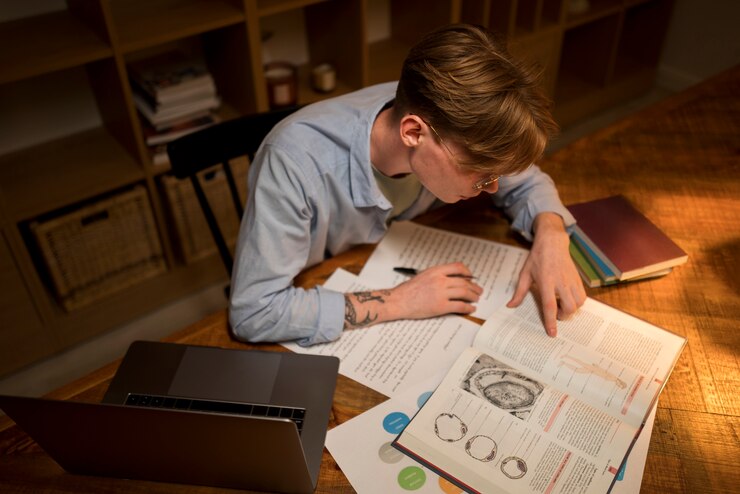Montessori kids’ furniture plays a crucial role in creating a child-centered learning environment that fosters independence, exploration, and creativity. Designed to suit the specific needs of young learners, Montessori Kids Furniture emphasizes functionality, simplicity, and natural materials. In this guide, we’ll explore everything you need to know about choosing the best Montessori furniture for kids, ensuring you make informed decisions for your child’s development.
What Is Montessori Kids Furniture and Why Is It Important?
Montessori kids furniture is crafted with the principles of the Montessori education philosophy in mind, where children are encouraged to learn through hands-on activities and self-directed exploration. The furniture is intentionally low to the ground, making it accessible for young children to use independently, enhancing their confidence and self-sufficiency. Montessori furniture is not only about style; it’s about fostering an environment that supports a child’s natural development.
Key Benefits of Montessori Furniture
Promotes Independence
Furniture like low tables, chairs, and accessible shelves empower children to retrieve and organize materials without adult help.
Enhances Focus
The simplicity of Montessori furniture minimizes distractions, allowing children to focus on activities and enhance concentration.
Encourages Movement
Flexible and child-sized, this furniture supports freedom of movement, essential for motor development.
Types of Montessori Furniture for Kids
Montessori furniture for kids can be divided into various categories, each serving a specific purpose. Let’s delve into the essentials you need to create a Montessori-inspired environment at home.
Montessori Shelves
Montessori shelves are the backbone of any Montessori-inspired setup. These low, open shelves allow children to access and return materials independently. Unlike traditional shelving units, Montessori shelves avoid closed cabinets, promoting a sense of order and accessibility.
- Material: Wooden shelves are preferred for durability and a natural look.
- Height: Ensure the shelves are low enough for toddlers to reach.
- Organizational Tips: Arrange toys and learning materials in baskets or trays, keeping the environment tidy and inviting.
Child-Sized Tables and Chairs
Tables and chairs designed specifically for children allow them to work and play comfortably. In Montessori settings, tables and chairs are lightweight, making it easy for kids to move them around and set up their own learning areas.
- Materials: Look for wood or bamboo, as they are eco-friendly and durable.
- Adjustable Height: Many tables and chairs come with adjustable height settings, ideal for growing children.
- Space Efficiency: Modular tables can be grouped or separated depending on the activity, promoting flexibility in learning.
Learning Towers and Step Stools
Learning towers and step stools empower children to reach counters and sinks, encouraging participation in everyday activities such as cooking and cleaning. They enhance motor skills and foster an understanding of daily routines.
- Safety Features: Choose models with safety rails to prevent falls.
- Adjustability: Some towers have adjustable platforms, allowing them to be used as children grow.
- Versatility: Convertible towers can also be used as playhouses or study areas, maximizing utility.
Montessori Beds
Montessori beds are floor beds or low beds that a child can easily climb in and out of independently. These beds allow children to develop a sense of responsibility for their sleep routine and freedom in their movement.
- Floor-Level Design: Ensures children can safely get in and out of bed by themselves.
- Natural Materials: Opt for beds made of non-toxic, sustainable materials.
- Customization: Many Montessori beds come with additional features like railings or curtains, adding a playful touch.
Toy Storage Units
Organizing toys is an essential aspect of Montessori education. Toy storage units with open, accessible sections enable children to manage their own playthings and develop organizational skills.
- Open Storage: Encourages children to keep their toys organized, supporting a clean and orderly environment.
- Baskets and Trays: Use these to separate different types of toys, creating a visually calming space.
- Rotational System: Introduce a toy rotation system to keep the play area fresh and engaging.
Montessori Desks
For older children, a dedicated desk is essential for focused learning activities like writing, drawing, and reading. Montessori desks are often simple, sturdy, and adjustable to grow with the child.
- Ergonomic Design: Choose a desk that fits the child’s height, promoting good posture.
- Clutter-Free: Montessori desks are minimalist, ensuring there’s enough space for concentration.
- Mobility: Some desks come with wheels, making it easier to rearrange the space as needed.
Reading Corners
Creating a reading corner with a cozy chair or cushion fosters a love for reading and a calm area for quiet activities. Montessori reading corners are inviting and placed in accessible areas to encourage frequent use.
- Comfortable Seating: Consider bean bags, small armchairs, or floor cushions for a cozy setting.
- Low Bookshelves: Place books on low shelves to allow easy access.
- Ambient Lighting: Include a soft light to create a warm and welcoming atmosphere for reading.
Choosing the Right Materials for Montessori Furniture
The materials used in Montessori furniture are critical for creating an authentic and safe learning environment. Here are the preferred choices for Montessori-friendly materials:
Natural Wood
Known for its durability, safety, and eco-friendliness, natural wood is the most common material in Montessori furniture.
Non-Toxic Finishes
Ensure the furniture is free from harmful chemicals and coatings, keeping the environment safe for children.
Sustainable Options
Bamboo and cork are renewable resources that offer durability and are environmentally friendly.
Setting Up a Montessori-Inspired Kids’ Room
Creating a Montessori-inspired room goes beyond just the furniture. Here’s a guide to designing a complete Montessori space at home.
Declutter and Organize
Keeping the space clean and organized is essential. Montessori rooms are clutter-free, as this promotes calmness and concentration.
- Remove Excess Items: Keep only essential furniture and toys.
- Introduce Storage Solutions: Use baskets and trays to organize items, making it easy for kids to clean up after themselves.
Natural Light and Simple Decor
Montessori environments prioritize simplicity and calm, so choose soft colors and avoid excessive decorations.
- Neutral Colors: Choose light, neutral colors for walls and furniture to create a serene setting.
- Maximize Natural Light: Position furniture to make the most of available natural light, creating a bright and cheerful atmosphere.
- Minimalist Artwork: Incorporate a few simple, child-friendly art pieces at the child’s eye level.
Incorporate Learning Zones
Designate specific areas in the room for different types of activities, such as a reading corner, a play area, and a sleeping area.
- Learning Area: Place a small table and chair for activities like drawing, puzzle-solving, and craftwork.
- Quiet Zone: Create a reading nook with bookshelves and comfortable seating.
- Open Floor Space: Allow room for free movement, enabling children to explore without restrictions.
Tips for Maintaining Montessori Furniture
Montessori furniture requires minimal maintenance, but here are a few tips to ensure it lasts.
Regular Cleaning
Wipe furniture with a damp cloth and mild soap.
Inspect for Wear and Tear
Check for any signs of wear and repair as needed.
Encourage Respect for Furniture
Teach children to care for their environment by cleaning up after activities.
Conclusion
Creating a Montessori-inspired space at home is an investment in your child’s development, encouraging independence, focus, and a love of learning. With the right furniture, you can transform any room into a nurturing environment that aligns with Montessori principles.











4 Comments
Профессиональный сервисный центр по ремонту бытовой техники с выездом на дом.
Мы предлагаем:ремонт бытовой техники в мск
Наши мастера оперативно устранят неисправности вашего устройства в сервисе или с выездом на дом!
Профессиональный сервисный центр по ремонту техники.
Мы предлагаем: Ремонт телефонов Caterpillar в Ростове на Дону
Наши мастера оперативно устранят неисправности вашего устройства в сервисе или с выездом на дом!
Профессиональный сервисный центр по ремонту техники.
Мы предлагаем: Ремонт электросамокатов ZERO в Ростове на Дону
Наши мастера оперативно устранят неисправности вашего устройства в сервисе или с выездом на дом!
Рекомендую отличный ресурс для поиска полезной информации на любые темы!
Особенно интересна категория: Подростки
На сайте есть удобные калькуляторы, сервисы и актуальные новости. Присоединяйтесь к сообществу активных пользователей!